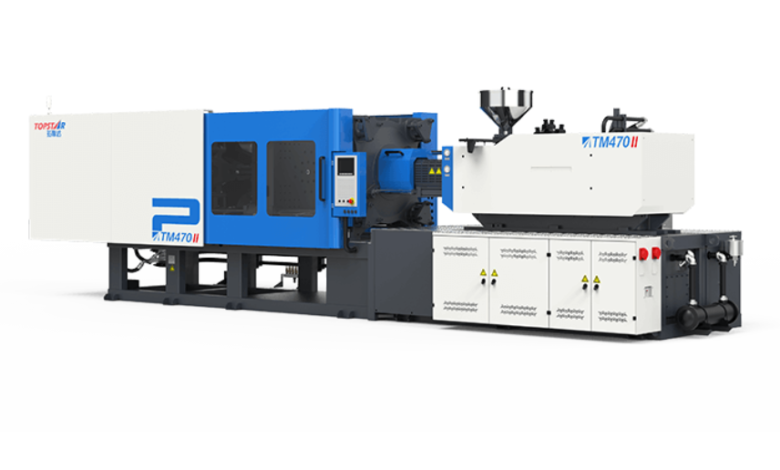Usage report: Causes and solutions for plastic injection molding machine shutdowns

Unplanned downtime on plastic injection molding machines can severely disrupt production schedules and increase operating costs. From interruptions lasting a few minutes to downtime lasting hours, every downtime event directly results in lost production and inefficient labor. In this usage report, we analyze the most common causes of injection molding machine downtime, from hydraulic leaks to software failures, and propose field-tested, reliable solutions. By applying these insights, molders can minimize interruptions, increase equipment availability, and maintain consistent product quality.
Hydraulic System Failures on Plastic Injection Molding Machine
One of the leading causes of downtime on a plastic injection molding machine is hydraulic system failure. Leaking hoses, clogged filters, or worn pump seals can all cause pressure drops, temperature spikes, and ultimately stalls. For example, a ruptured high-pressure line often triggers the machine’s safety interlocks, causing the machine to shut down immediately to prevent catastrophic failure.
To address these issues, maintenance teams must develop a strict hydraulic oil management program. First, schedule an oil analysis every 500 machine hours to detect contamination or viscosity changes. Second, replace hoses and seals immediately at the first sign of wear, using OEM-specified parts that meet the system’s maximum pressure. Finally, install inline particulate matter sensors and pressure transducers to feed real-time data into the machine’s PLC, providing predictive maintenance alerts before pressure deviations cause downtime.
Electrical and Control Panel Failures for Plastic Injection Molding Machine
Electrical failures are another major cause of downtime for plastic injection molding machine. Power surges can damage PLC firmware, while loose terminal blocks can interrupt sensor feedback loops, triggering fault codes and halting production. These disruptions can be addressed by integrating surge protection devices and isolation transformers into the facility’s power distribution system. Perform quarterly thermal imaging inspections of control cabinets to identify hot spots that indicate loose connections. Also, maintain version-controlled backups of all PLC and HMI configurations. If a program becomes corrupted, technicians can quickly reload validated software to restore machine functionality in minutes.
Cooling Systems and Thermal Overloads
Heat buildup, whether in the mold, barrel, or hydraulic oil cooler, often triggers a thermal shutdown for plastic injection molding machines. Clogged cooling channels in the mold can cause uneven shrinkage and mold-open alarms, while fouling of the heat exchanger can cause oil temperatures to rise, activating thermal protection circuits.
To avoid these downtimes, schedule a biennial cleaning for all cooling circuits and use a biodegradable descaling agent to remove scale deposits. Upgrade to a high-efficiency variable-speed water pump that automatically adjusts flow based on differential temperature readings. For barrel cooling, install a thermostatically controlled oil cooler rated for 80°C operation and lubricate the fan bearings on the variable-speed cooling electrical cabinet to maintain optimal airflow.
See also: How Workers’ Compensation Protects Employees and Employers Alike
Material handling and barrel blockages
Material feed issues—such as moisture in the resin, contaminated pellets, or a clogged hopper—can cause a plastic injection molding machine to stall during the plasticizing phase. When pellets clog the feed or partially melt prematurely, the screw cannot build the necessary back pressure, resulting in a low-pressure alarm and cycle interruption.
These material-related downtimes can be prevented by implementing a rigorous resin drying regimen tailored to the moisture sensitivity of each polymer. Install a loss-in-weight feeder with gravimetric calibration to ensure a steady feed of resin. Install a quick-release hopper and cyclone screen to isolate and remove foreign matter before it enters the barrel. By taking these steps, you can prevent feedthroat blockage and keep your injection molding machine running smoothly during high-volume production.
Mechanical Wear and Preventive Maintenance
Continuous high-speed operation accelerates mechanical wear on plastic injection molding machine components. Gradual loss of clamping unit preload, or scoring on guide rails, once position tolerances are exceeded, can lead to excessive vibration, misalignment, and ultimately downtime. Follow a proactive maintenance plan to avoid downtime due to wear. Perform vibration analysis on critical bearings and gearboxes to detect early signs of fatigue. Replace tie rods and bearing strips at recommended intervals and use torque-verified fastener procedures. Apply precision lubricants with polymer-compatible additives to sliding surfaces to reduce friction and wear. With these preventive maintenance measures, your injection molding machine maintains mechanical integrity and minimizes unplanned downtime.
Reduce Downtime
Plastic injection molding machines can shut down for a variety of reasons: hydraulic leaks, electrical failures, thermal overloads, material feed blockages, mechanical wear, and process inefficiencies. However, by applying a systematic maintenance strategy, advanced monitoring tools, and best-in-class equipment upgrades, you can significantly reduce unplanned downtime.




